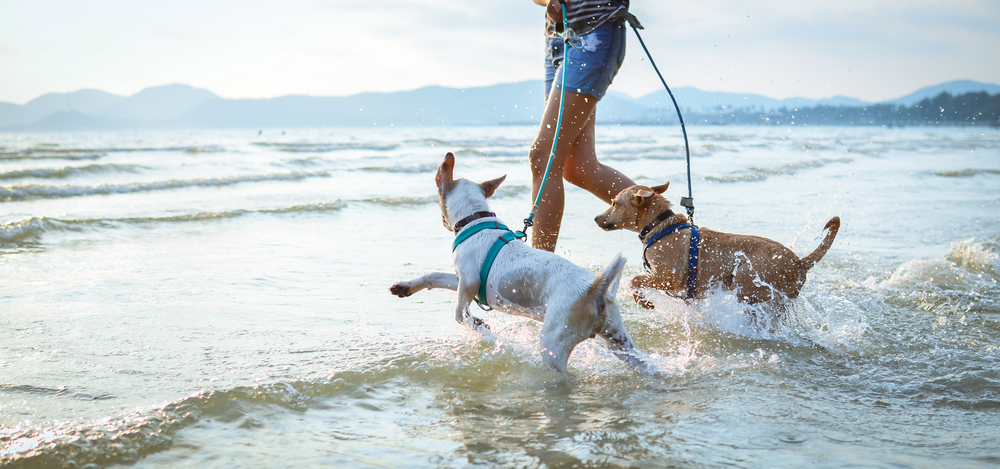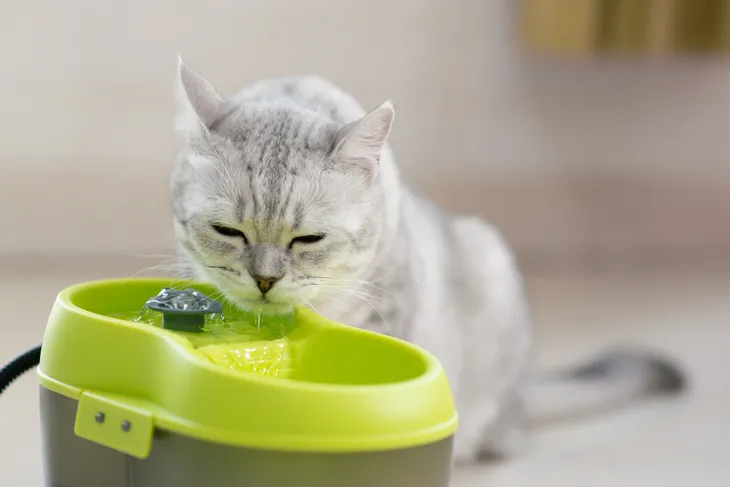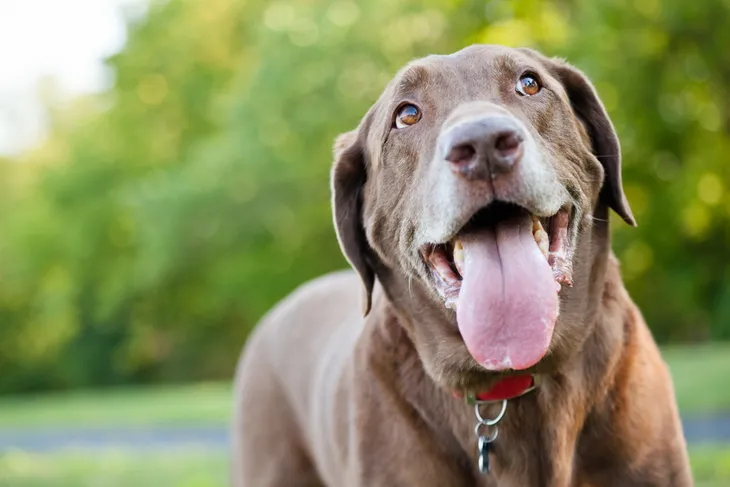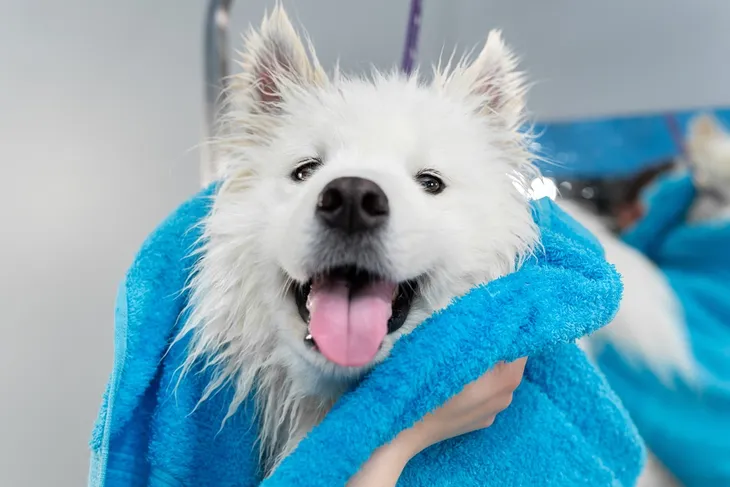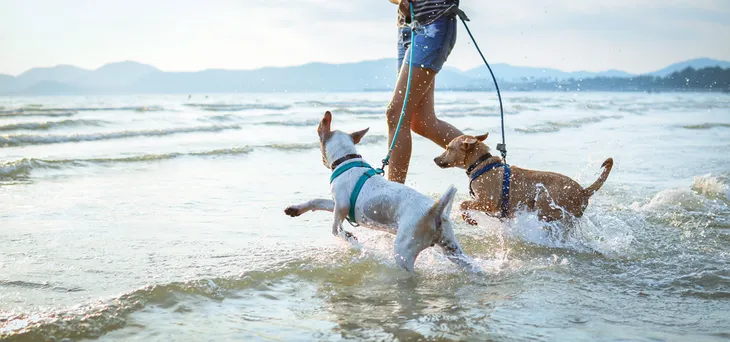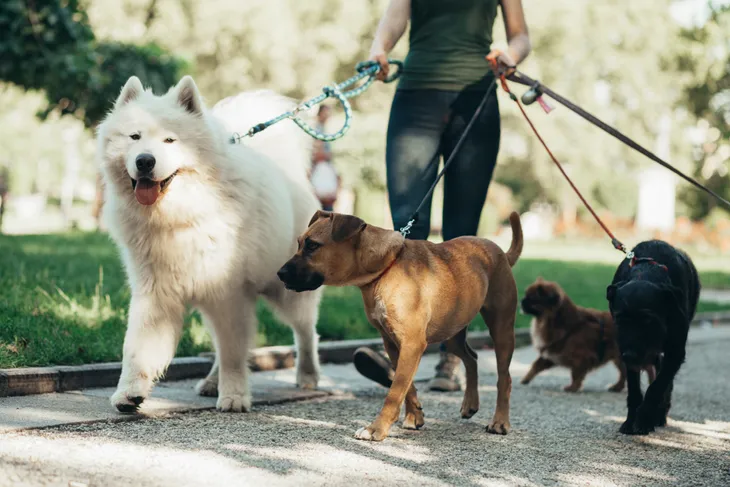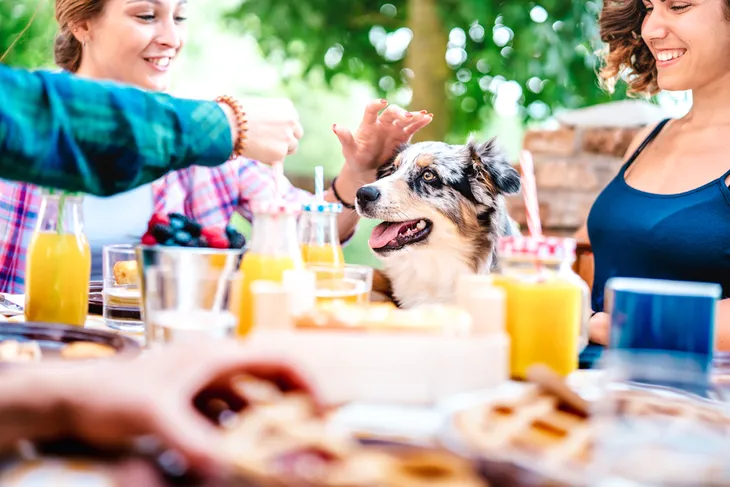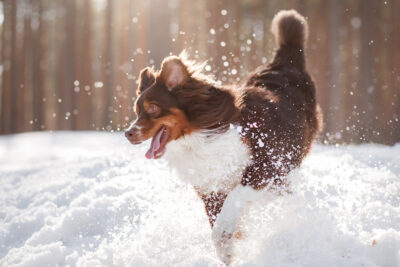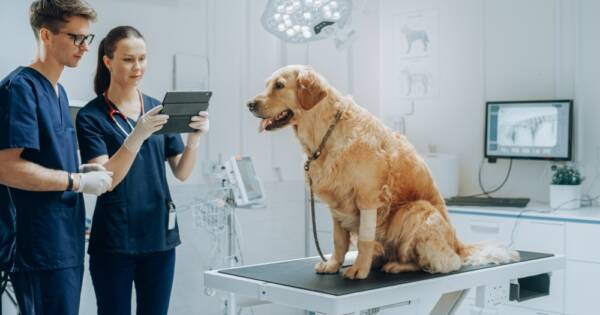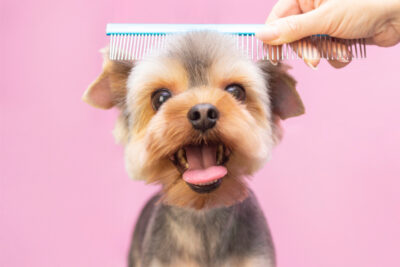- Summer can be fun for both you and your pet but just like humans, animals are susceptible to summer hazards too.
- Dehydration, sunburns, and heatstroke are major concerns for pets and steps should be taken to help protect them.
- You may also need to protect your pet from bugs and poisonous foods, and comfort them during fireworks.
Summer offers plenty of fun for both you and your pet. If you have a dog, you can take them on hikes, swims, and plenty of outdoor playtime. Cats love to roam outside too from lounging on the patio to exploring the backyard. While you’re surely protecting yourself this summer by staying hydrated and applying sunscreen, it’s important to take safety precautions with your pet too.
Our furry best friends are just as susceptible to summer hazards like heat stroke, insect bites, dehydration, and even sunburns. Protect your pet this season by getting informed. Here are 12 summer safety tips for pets!
Hydration
While you sip on your water bottle throughout the day, don’t forget to give your pet plenty of fresh and clean water! When lounging outside, don’t forget to bring a bowl of water for your pet. If you’re going for a hike, don’t forget to bring a water bottle and travel bowl for your dog. Summer can get hot, and dehydration is a serious risk without adequate water.
It’s also important to know the warning signs of dehydration, which include dry and sticky gums, dry nose, thick saliva, panting, and lethargy. These signs are the same for both cats and dogs. If your pet is showing signs of dehydration take them to the vet and do your best to encourage fluid intake.
Never Leave Your Pet in a Closed Vehicle
While you may be tempted to bring your pet on the road, be sure they can go everywhere with you. This means if you need to stop at a store or restaurant, it must be pet-friendly because leaving your pet in the car is not an option, especially in the summertime.
Leaving your pet in a hot, parked car can have detrimental consequences in just minutes, says the American Kennel Club (AKC). “When it’s only 80 degrees outside, the inside of a car can heat up to more than 120 degrees in just minutes,” explains the source. Leaving the windows down won’t help either. If they can’t go everywhere with you, they’re better off staying at home where they can stay cool and safe.
Know the Signs of Heat Stroke in Pets
Any hot environment can make your pet susceptible to heat stroke. This can be leaving your pet in a hot car, or not providing enough water and shade when playing outdoors.
Some dogs are also just more prone to heat stroke than others too, such as dogs with thick fur and short noses or dogs with certain medical conditions that make them predisposed, says the Memphis Veterinary Specialists.
It’s vital that you know the signs of heat stroke so you can get your pet the help it needs as soon as possible. The AKC says warning signs of heatstroke include panting, drooling, a rapid pulse, and fever.
What to Do if Your Pet Has Heat Stroke
If you suspect your pet has heatstroke, you must take swift action, as heatstroke can be fatal. The AKC says the fastest way to reduce their body temperature is to immerse the pet in cool water. You can also drape them with cool towels but never use ice-cold water as this can make the problem worse.
It’s also important to seek emergency veterinary care as soon as possible, especially if your pet is showing signs of advanced heat stroke (such as drooling, increased heart rate, vomiting, or diarrhea). Time is of the essence and the main goal is to gradually reduce temperature without inducing shock.
Be Mindful of Hot Surfaces
When taking your pet for a walk, it’s important to be mindful of hot surfaces. Concrete, asphalt, and sand can all get extremely hot and can burn your pet’s paws.
The AKC says if the temperature is 85-degrees Fahrenheit or more, it’s likely the pavement will be too hot for your pet too. In fact, the source says “when the air temperature is 86 degrees, the asphalt temperature registers 135 degrees.” They also recommend placing your hand on the ground for 10-seconds. If it’s too hot for your hand, it’s too hot for their paws.
To avoid burns, take your pet for a walk earlier in the day or later in the evening when the temperatures cool down. You can also protect their paws by taking them for walks on the grass instead.
Pool/Water Safety
Some dogs love to swim while others hate the water but regardless of their preferences you need to take precautions when they’re near the water. For starters, chlorine in pools can irritate their skin and it can upset their stomach if they drink too much. Be sure to provide your dog with plenty of fresh, clean water so they’re not tempted to drink out of the pool. It may also be safer to fill a small kiddy pool with water instead of allowing them to swim in the pool.
You also need to be safe near lakes and oceans. While dogs often have an instinct to swim, you should never throw them in the water. The AKC says start in shallow water, always keep them within arm’s reach, and keep an eye on how they’re swimming. If they doggy-paddle with only their front legs, then lift their hind legs to help them float, they should catch on quickly. Also, be careful with strong tides, and never leave your dog unattended in the water.
Sunburns
Just like humans, dogs are susceptible to sunburns and other complications from sun exposure. The AKC says if you’re not careful, it can lead to more serious problems like skin cancer. This is why it’s so important to practice sun safety with your pet.
Take extra precaution if your pet has short, thin, or light-colored coats as they’re more susceptible to sunburns. To protect your pet from the sun, reduce their sun exposure during peak times when the UV is strong and talk to your vet about getting a pet-safe sunscreen.
Bug Prevention
There are several pesky bugs lurking outside that can cause problems for your pet. For starters, the Ontario SPCA and Humane Society say that mosquitoes can not only cause itchy bites, but they can also transmit heartworms. This is why heartworm medication is very important, especially during the summer.
You’ll also need to be mindful of fleas and ticks lurking outside. Fleas can infest not only your pet but your home too if they’re brought inside. With ticks, you need to be mindful of Lyme disease which can cause serious complications in your pet. If your pet isn’t already on flea and tick prevention medication, talk to your vet.
What to Do if a Tick Bites
Sometimes, as much as you try to avoid it, those pesky ticks still latch on. So what do you do now? You can contact your veterinarian and have it professionally removed, or you can remove it yourself but there are a few important steps to keep in mind.
Mountain Road Animal Hospital says it’s vital that you remove the tick as soon as possible because a tick carrying disease-causing bacteria only needs to feed on your pet for 18- to 24-hours before it can transmit the bacteria. You’ll also need blunt tweezers that are designed for taking out ticks.
The source says first dab rubbing alcohol on the tick. Then, “take hold of the tick as close to the dog’s skin as you can, in order to avoid detaching the head from the body,” explains the source. Be sure to pull it out with an even and constant pressure (don’t twist or jerk the tick). It may take a minute or two. After the tick is removed, disinfect the bite area and wash your hands with soap and water.
Avoid Strenuous Activity in Hot Weather
Exercise is important for your pet and helps keep them healthy but some days it’s just too hot. The Humane Society of the United States also says to be mindful of the humidity because if the humidity is too high, your pet may have difficulty cooling themselves, causing their body temperature to skyrocket.
When it’s very hot, be sure to limit exercise to early morning or evening, when temperatures drop. When you are outside, always carry water with you to help keep your pet hydrated.
Fireworks and Comforting Your Pet
There are many celebrations over the summer months and with that often comes fireworks. While some pets are unbothered by loud fireworks, others suffer from anxiety.
The AKC says to protect your pet, be sure to keep them away from fireworks. Don’t take them with you and don’t let them outside while fireworks are going off. This is also a vital time to ensure your pet has proper identification tags or a microchip. In the event your pet accidentally escapes, there’s a greater chance your pet will be returned if they have proper identification.
If your pet is showing signs of anxiety, it’s important that you create a comforting environment for them and help calm them by petting them with long, slow, and firm strokes. If their anxiety is severe, talk to your vet about medication ahead of the celebrations. An anxiety vest may also be effective in calming your pet.
Barbecues and Food Safety
Nothing quite beats a barbecue get-together with friends or family during the summertime. However, this is the perfect time to brush up on food safety for pets. For starters, be mindful of the food that’s stuck on the barbecue, and don’t let your dog get too close. It can be tempting for your pet to lick the barbecue which can lead to burns. Keep your dog away or at the very least, be sure to close the lid.
If you use lighter fluid be sure to store this out of reach as it is poisonous to dogs and other pets. You should also brush up on what foods are and aren’t safe for your pet. For example, never give your dog chicken bones as they’re weak and brittle and can splinter when they’re chewing on them.
You also should never feed your cat or dog bacon, bacon grease, ham, or fat trimmed-off meat as they’re high in fat and salt and can lead to indigestion, vomiting, and diarrhea. Other foods that can be toxic to dogs include onions, grapes, avocados, and more. If your dog ingests harmful foods, contact your vet right away.
